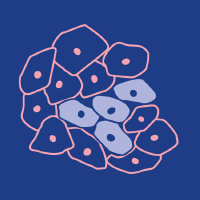The response of plants to abiotic stress is intricately mediated by
PYR/PYL/RCARs, key components within the ABA signal transduction pathway. Despite the widespread identification of
PYL genes across diverse plant species, the evolutionary history and structural characteristics of these genes within the pomegranate (
Punica granatum L.) remained unexplored. In this study, we uncovered, for the first time, 12
PgPYLs from the whole genome dataset of ‘Tunisia’, mapping them onto five chromosomes and categorizing them into three distinct subgroups (Group I, Group II, and Group III) through phylogenetic analysis. Detailed examination of the composition of these genes revealed similar conserved motifs and exon–intron structures among genes within the same subgroup. Fragment duplication emerged as the primary mechanism driving the amplification of the
PYL gene family, as evidenced by intra-species collinearity analysis. Furthermore, inter-species collinearity analysis provided insights into potential evolutionary relationships among the identified
PgPYL genes. Cis-acting element analysis revealed a rich repertoire of stress and hormone response elements within the promoter region of
PgPYLs, emphasizing their putative roles in diverse signaling pathways. Upon treatment with 100 μmol/L ABA, we investigated the expression patterns of the
PgPYL gene family, and the qRT-PCR data indicated a significant up-regulation in the majority of
PYL genes. This suggested an active involvement of
PgPYL genes in the plant’s response to exogenous ABA. Among them,
PgPYL1 was chosen as a candidate gene to explore the function of the gene family, and the CDS sequence of
PgPYL1 was cloned from pomegranate leaves with a full length of 657 bp, encoding 218 amino acids. Tobacco transient expression analysis demonstrated a consistent trend in the expression levels of pBI121-
PgPYL1 and the related genes of the ABA signaling pathway, both of which increased initially before declining. This study not only contributes to the elucidation of the genomic and structural attributes of
PgPYL genes but also provides a foundation for understanding their potential functions in stress responses. The identified conserved motifs, evolutionary relationships, and expression patterns under ABA treatment pave the way for further research into the
PgPYL gene family’s role in pomegranate biology, offering valuable insights for future studies on genetic improvement and stress resilience in pomegranate cultivation.
Full article
 IJMS
IMPACT
IJMS
IMPACT Applied Sciences
IMPACT
Applied Sciences
IMPACT Sustainability
IMPACT
Sustainability
IMPACT Sensors
IMPACT
Sensors
IMPACT JCM
IMPACT
JCM
IMPACT Materials
IMPACT
Materials
IMPACT Molecules
IMPACT
Molecules
IMPACT Energies
IMPACT
Energies
IMPACT Electronics
IMPACT
Electronics
IMPACT Remote Sensing
IMPACT
Remote Sensing
IMPACT Cancers
IMPACT
Cancers
IMPACT Nutrients
IMPACT
Nutrients
IMPACT Mathematics
IMPACT
Mathematics
IMPACT Foods
IMPACT
Foods
IMPACT Buildings
IMPACT
Buildings
IMPACT Polymers
IMPACT
Polymers
IMPACT Animals
IMPACT
Animals
IMPACT Water
IMPACT
Water
IMPACT Plants
IMPACT
Plants
IMPACT Agronomy
IMPACT
Agronomy
IMPACT Biomedicines
IMPACT
Biomedicines
IMPACT Processes
IMPACT
Processes
IMPACT Microorganisms
IMPACT
Microorganisms
IMPACT Diagnostics
IMPACT
Diagnostics
IMPACT Nanomaterials
IMPACT
Nanomaterials
IMPACT Viruses
IMPACT
Viruses
IMPACT Medicina
IMPACT
Medicina
IMPACT Healthcare
IMPACT
Healthcare
IMPACT Cells
IMPACT
Cells
IMPACT Forests
IMPACT
Forests
IMPACT Agriculture
IMPACT
Agriculture
IMPACT Land
IMPACT
Land
IMPACT JMSE
IMPACT
JMSE
IMPACT IJERPH
IJERPH
 Symmetry
IMPACT
Symmetry
IMPACT Genes
IMPACT
Genes
IMPACT Pharmaceutics
IMPACT
Pharmaceutics
IMPACT Coatings
IMPACT
Coatings
IMPACT Micromachines
IMPACT
Micromachines
IMPACT Pharmaceuticals
IMPACT
Pharmaceuticals
IMPACT Atmosphere
IMPACT
Atmosphere
IMPACT Children
IMPACT
Children
IMPACT Religions
IMPACT
Religions
IMPACT Antioxidants
IMPACT
Antioxidants
IMPACT Life
IMPACT
Life
IMPACT Metals
IMPACT
Metals
IMPACT Biomolecules
IMPACT
Biomolecules
IMPACT Vaccines
IMPACT
Vaccines
IMPACT Education Sciences
IMPACT
Education Sciences
IMPACT Minerals
IMPACT
Minerals
IMPACT Horticulturae
IMPACT
Horticulturae
IMPACT Brain Sciences
IMPACT
Brain Sciences
IMPACT JPM
IMPACT
JPM
IMPACT Bioengineering
IMPACT
Bioengineering
IMPACT


























